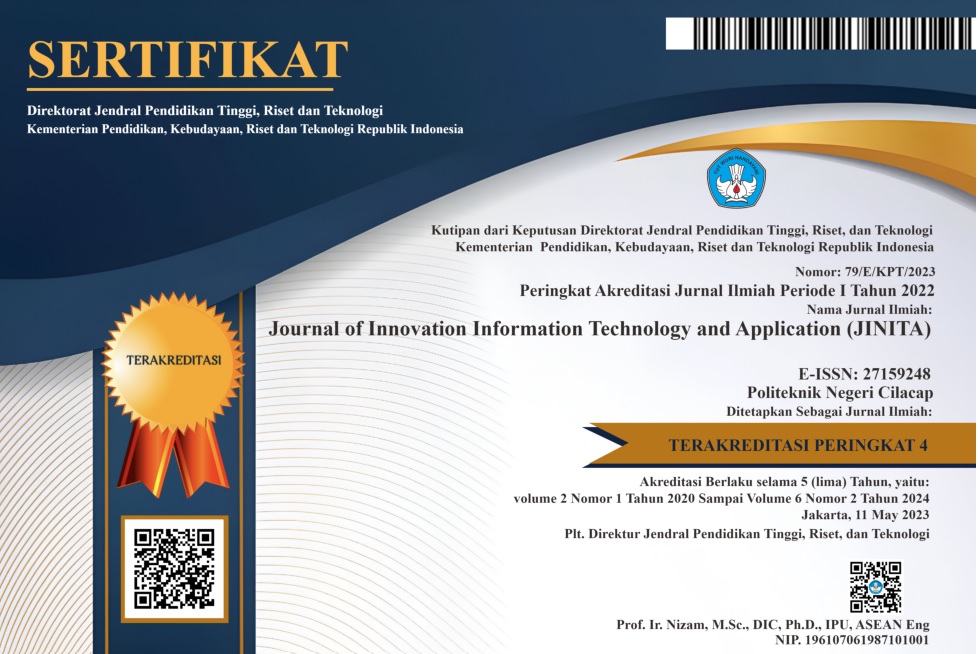Application of the NIST 800-86 Framework to Forensic Digital Evidence for Signal and Litmatch
 Abstract views: 291
,
Abstract views: 291
,
 PDF downloads: 256
PDF downloads: 256
Abstract
Exchanging messages is a routine that cannot be avoided at this time. With the development of technology, exchanging messages has become easier to do. The thing that makes exchanging messages easier is the instant messaging application. Examples of instant messaging applications are the Signal and Litmatch applications. In addition to the ease of exchanging messages, there are also negative impacts, such as threats and bullying. Forensic analysis is carried out to find and obtain evidence of digital crimes. This research was conducted to find and obtain evidence of Signal and Litmatch applications by conducting case scenarios and using the National Institute of Standards and Technology (NIST) 800-86 method. This study uses the MobilEdit Forensic and Autopsy tools to obtain evidence from the Signal and Litmatch applications.
References
[2] “Signal >> Beranda.” https://signal.org/id/ (accessed Apr. 03, 2022).
[3] “Litmatch.” https://www.litatom.com/#/ (accessed Feb. 09, 2022).
[4] S. RACHMIE, “Peranan Ilmu Digital Forensik Terhadap Penyidikan Kasus Peretasan Website,” Litigasi, vol. 21, no. 21, pp. 104–127, 2020, doi: 10.23969/litigasi.v21i1.2388.
[5] “ANALISIS FORENSIK DIGITAL APLIKASI BEETALK UNTUK PENANGANAN CYBERCRIME MENGGUNAKAN METODE NIST | Syahib | Seminar Nasional Informatika (SEMNASIF).” http://www.jurnal.upnyk.ac.id/index.php/semnasif/article/view/2629 (accessed Jun. 03, 2022).
[6] “Analisis Digital Forensik Aplikasi Ovo Pada Android | Sianipar | eProceedings of Applied Science.” https://openlibrarypublications.telkomuniversity.ac.id/index.php/appliedscience/article/view/16967 (accessed Jun. 03, 2022).
[7] A. Yudhana, I. Riadi, and I. Anshori, “Analisis Bukti Digital Facebook Messenger Menggunakan Metode Nist,” IT J. Res. Dev., vol. 3, no. 1, pp. 13–21, Aug. 2018, doi: 10.25299/ITJRD.2018.VOL3(1).1658.
[8] “Akuisisi Bukti Digital Pada Instagram Messenger Berbasis Android Menggunakan Metode National Institute Of Justice (NIJ) | Jurnal Teknik Informatika dan Sistem Informasi.” https://journal.maranatha.edu/index.php/jutisi/article/view/1490 (accessed Jun. 05, 2022).
[9] G. Fanani, I. Riadi, and A. Yudhana, “Analisis Forensik Aplikasi Michat Menggunakan Metode Digital Forensics Research Workshop,” J. MEDIA Inform. BUDIDARMA, vol. 6, no. 2, pp. 1263–1271, Apr. 2022, doi: 10.30865/MIB.V6I2.3946.
[10] D. Yuliana, T. Yuniati, and B. Parga Zen, “Analisis Forensik Terhadap Kasus Cyberbullying Pada Instagram Dan Whatsapp Menggunakan Metode National Institute of Justice (Nij),” Cyber Secur. dan Forensik Digit., vol. 5, no. 2, pp. 52–59, 2023, doi: 10.14421/csecurity.2022.5.2.3734.
[11] K. Kent, S. Chevalier, T. Grance, and H. Dang, “Special Publication 800-86 Guide to Integrating Forensic Techniques into Incident Response Recommendations of the National Institute of Standards and Technology”.
Copyright (c) 2024 Nurul Puspa Hapsari, Bita Parga Zen

This work is licensed under a Creative Commons Attribution 4.0 International License.
Authors who publish with this journal agree to the following terms:
- Authors retain copyright and grant the journal right of first publication with the work simultaneously licensed under a Creative Commons Attribution License that allows others to share the work with an acknowledgement of the work's authorship and initial publication in this journal.
- Authors are able to enter into separate, additional contractual arrangements for the non-exclusive distribution of the journal's published version of the work (e.g., post it to an institutional repository or publish it in a book), with an acknowledgement of its initial publication in this journal.
- Authors are permitted and encouraged to post their work online (e.g., in institutional repositories or on their website) prior to and during the submission process, as it can lead to productive exchanges, as well as earlier and greater citation of published work (See The Effect of Open Access).
















